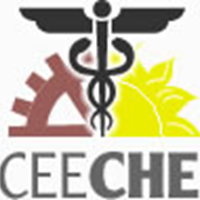CEECHE 2024: Seeking Solutions for Environmental Exposures and Disease Risks
The abstract submission window is open from March 1 until April 15, 2024.
Click here to submit your abstract to CEECHE 2024!
Link: https://uky.az1.qualtrics.com/jfe/form/SV_4GkgLzhlreNgjNs
Abstracts are solicited from leading scientists worldwide, especially from scientists in Central and Eastern European countries.
There are two types of abstracts which can be submitted to the conference:
- a) Oral and b) Poster
All abstracts should be written in English and should not exceed 300 words.
Abstracts will undergo a peer-review process, and notification of acceptance will be sent to authors during the first week of April 2024.
Oral Presentations
Oral presentations are scheduled throughout the Conference. You should check the Conference Program when it becomes available and online to find the date for your oral presentation.
Oral presentations will be allotted a total of 15 minutes. In general, it is recommended to allow for 3 – 5 minutes of questions following your presentation. The PowerPoint of your presentation will need to be submitted to the Scientific Committee the day before your scheduled presentation date.
Poster Presentations
Poster sessions are scheduled during the Conference, as will be presented in the detailed Conference Program and integrated into the Conference activities. You should check the Conference Program when it becomes available and online to find the date scheduled for your poster presentation.
A standard poster board will be provided for poster display beginning in the morning of the poster sessions. Your poster details (number of poster paper, etc.) will appear on the top side of the board so you can locate your board easily.
The poster size should be A0 portrait-oriented (width: 84.1 cm / 33.1 in, height: 118.9 cm / 46.8 in). Do not exceed these dimensions or your poster will not fit. The poster must be easily readable from 1.5-2.0 m distance, so please choose the appropriate font size. Providing A4 takeaway versions of your poster is permitted but not required.
Posters will be judged during the poster session; authors are requested to be available during the scheduled poster sessions for questions on their posters.
To efficiently convey your message and communicate the results of your research to the viewers, we recommend spending considerable effort in designing your poster. Some helpful tips include keeping it short and straightforward and avoiding putting too much text on it. Your poster is a visual aid to present your work. Visual elements such as graphs, diagrams, and figures should dominate. If possible, use bulleted statements rather than blocks of text.
Topics
The Conference will be organized in several specialized sessions around the following topics:
- Toxicological studies that describe the health effects of persistent organic pollutants, metals, microplastics, mixtures, and new and emerging pollutants.
- Mechanistic biological response: The totality of human exposure, the concept of the exposome, and implications for the future of environmental research on environmentally induced diseases
- Impacts across the lifecycle and developmental phases of high vulnerability.
- Assessing population health impacts.
- Exposure science and risk assessment
- Cluster analysis
- Epidemiological and geospatial studies
- Geoinformatics, remote sensing and Big Data handling
- Environmental detection and remediation approaches for identifying and reducing exposure risks.
- Sustainable remediation technologies
- Low-cost, real-time monitoring techniques
- Novel methods for characterizing and assessing environmental exposure risks
- Emerging (and ongoing) issues for water resources that impact drinking water sources.
- Per- and polyfluoroalkyl substances (PFAS)
- Micro and nano plastics (MPs and NPs)
- Distribution systems infrastructure and related challenges
- Global water security
- Socioeconomic aspects and water resources policies and governance
- Indoor and outdoor air pollution health effects and mitigation approaches
- 3D printing in schools and the workplace
- Volatile organic compounds, including disinfection byproducts
- Particulate matter, including combustion byproducts
- Radionuclides, including radon
- Environmental disease prevention and intervention through lifestyle modifications
- Healthful nutrition and increased physical activities as modulators to reduce chemical toxicity
- Chemical and physical stressors that may promote environmental toxic insults
- Other topics of regional interest
